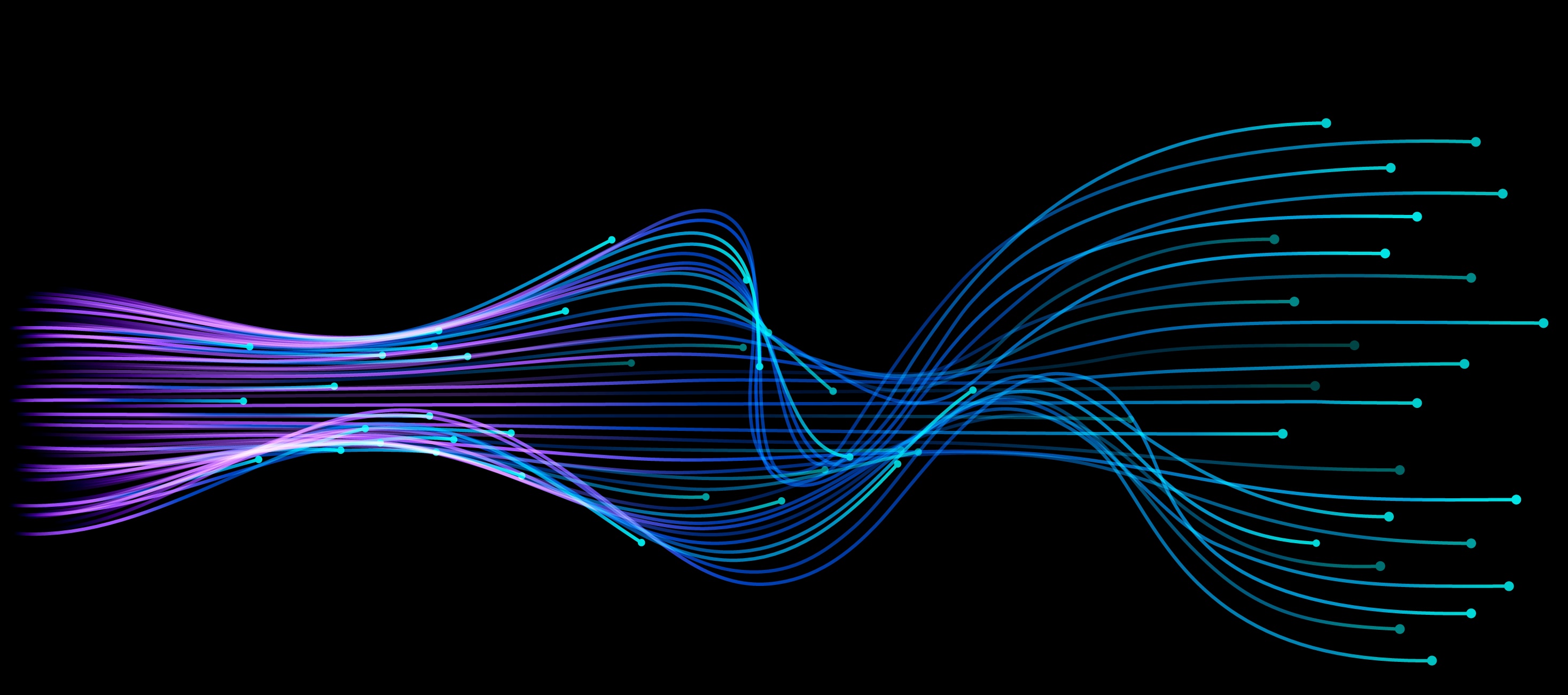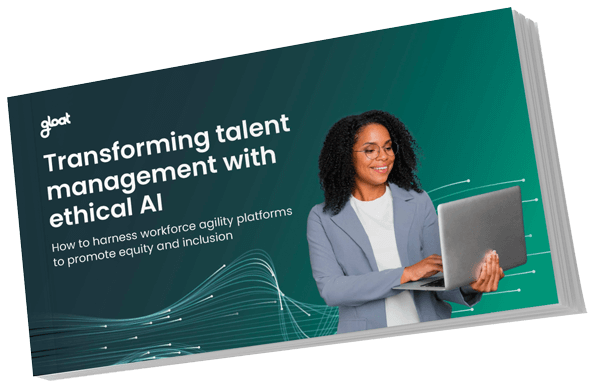AI is here to help, not replace, future workforces
By 2030, McKinsey predicts that 30% of the hours worked today could be automated. That means that AI innovations are on track to take over nearly one-third of the tasks employees are currently working on. For most people, that eye-opening statistic elicits two reactions: fear and excitement. The rise of automation has tremendous potential to

By 2030, McKinsey predicts that 30% of the hours worked today could be automated. That means that AI innovations are on track to take over nearly one-third of the tasks employees are currently working on.
For most people, that eye-opening statistic elicits two reactions: fear and excitement. The rise of automation has tremendous potential to help companies work more efficiently and minimize the amount of time employees spend on various tasks. But as new AI use cases emerge, many employees are also beginning to fear for their job security.
While there’s no doubt that AI will change the nature of many of today’s jobs, that doesn’t mean that employees should start penning their resignation letters. Instead, it’s up to executives to create pathways to help their people build new skills so that they can use these innovations to their business’s advantage.
3 ways AI will change the future of work
As AI innovations continue to go mainstream, there are a handful of work changes that leaders can expect to see. Some key shifts to anticipate include:
#1. AI will underscore the importance of soft skills
No leader has a crystal ball that gives them a clear picture of all the ways that automation and AI will transform operating models and business processes. But executives can expect that these innovations will help employees with some hard skills, such as composing an email or writing lines of code.
In contrast, AI tools are unlikely to help workers master soft skills like problem-solving, critical thinking, and conflict resolution. Consequently, it will be particularly important for employees to hone these types of competencies so they can use AI to their advantage instead of worrying about being replaced by it. When people possess skills that are complementary to AI’s capabilities, it will pave the way for more seamless collaboration between humans and machines.
#2. It will transform workforce planning
One of the key ways AI will change how work gets done is by equipping leaders with the insights they need to make strategic workforce planning decisions based on the skills their people have and the capabilities they need. Traditionally, it’s been challenging for leaders to gain a bird’s eye view of skills because this information is typically siloed into a few different HR systems. Most taxonomies are also outdated, leading to talent strategies that may not address the organization’s actual needs.
Rather than settling for this subpar understanding of workforce skills, companies are harnessing AI-powered tools like Gloat’s Skills Foundation to gain visibility into their peoples’ capabilities. These systems are updated in real-time and pull from an employee’s LinkedIn or CV, in turn capturing the full range of knowledge they’re bringing to the table. Organizations that use AI-powered skills intelligence tools can map out the skills and roles that are most crucial to their business, see where existing skills lie, and identify any potential gaps in knowledge before they snowball into bigger problems.
#3. It will drive cross-functional collaboration and seamless talent reallocations
When you need to move fast to launch a product, deliver against a priority, or mitigate a challenge, leaders and managers can turn to AI to help them reallocate talent efficiently to respond to these circumstances. Without full insight into the skills their people have, executives will struggle to find internal candidates with the capabilities and transferable skills needed to tackle various high-priority projects in a timely manner.
AI helps leaders pinpoint employees with the skills they’re looking for, making it easier to spin up cross-functional teams or talent redeployments that enable their organization to respond to challenges more efficiently.
3 way to prepare for an AI-driven workplace
Leaders can’t sit back and wait for AI innovations to transform their workforces. Instead, executives must take several steps to proactively help employees prepare for the proliferation of AI, so that they can use new use cases to their business’s advantage.
#1. The importance of upskilling in the AI era
As AI takes over some of employees’ responsibilities, it will simultaneously create new roles that workers must be upskilled or reskilled to take on. Executives should assess the skills their workforce has and the capabilities they need and create pathways to help employees build these desired competencies. Employees will need access to an array of educational resources, including content-based curriculums, coaching, and hands-on learning opportunities such as projects and gigs—which are particularly essential for on-the-job expertise.
Many companies are using talent marketplaces to connect employees with open opportunities across their organization that align with the skills their workers are looking to build. The most impactful platforms include an opportunity hub to centralize all volunteering, learning, and training resources—in turn encouraging people to take advantage of them.
#2. There are new risks HR teams must address
While the rise of AI has plenty of potential benefits, it also comes with some risks that HR leaders must have on their radars. Perhaps most notably, businesses must go the extra mile to ensure they’re transparent about their data collection processes and that employee confidentiality is protected.
As Odia Kagan, Partner and Chair of GDPR Compliance and International Privacy at Fox Rothschild, explains, leaders must ask themselves, “Can I do it better? Can I accomplish this in a better way? Is there a better and less invasive way to get to this information? Can I get some of this through anonymous surveys instead?”. Whenever executives are considering implementing new AI-powered systems, they must ask potential vendors about their approach to data collection to ensure they’re keeping employee privacy top of mind.
#3. Get strategic about AI use cases
Although it might be tempting to experiment with every new AI use case that emerges, it’s best to take a more strategic approach to implementing these systems. Paula Goldman, Chief Ethical and Humane Use Officer at Salesforce, believes that executives are quickly becoming more discerning about their company’s AI usage, noting, “I think people are becoming smart about what these new tools are good for and what they’re not good for. I think we’re seeing the emergence of a set of norms and standards for how we interact with these tools responsibly.”
Leaders must consider the direct and indirect consequences of each AI system they’re evaluating and recognize that while AI-powered tools can be incredibly useful, they won’t solve all of the challenges their organizations face.
Why AI should be considered an opportunity, not a threat
It’s human nature to feel a bit apprehensive about the unknown. And the latest AI innovations can definitely be considered the unknown because, until fairly recently, people weren’t using AI on a regular basis to accomplish their day-to-day tasks.
Although there’s still some uncertainty about how AI will impact jobs in the long term, in the short term leaders can feel confident that these innovations present an opportunity, not a threat. They will enable employees to spend more of their time focusing on higher-level and more strategic tasks and eliminate a lot of the tedious work that currently makes up part of most employees’ work days.
To learn more about what our future with AI will look like and how to leverage these systems responsibly, check out our guide, Transforming talent management with ethical AI.





